
Penguins Take 2-1 Series Lead
The Pittsburgh Penguins 3-1 win in Game 3 to take a 2-1 series lead has the Penguins now forcing the Rangers to chase the series for a second time.
Special Teams were critical in the first forty minutes.
A Rick Nash shorthanded goal, 39 seconds into the second period, gave the Rangers a 1-0 lead but a night of celebration for the Penguins with the “W” shouldn’t be overlooked by two very important penalty kills minutes later after the Nash shorthanded goal.
Trevor Daley took a bad penalty in front of Matt Murray after the whistle at 3:18 of the second frame. It was a great opportunity for New York to go up two goals, Pittsburgh kills off the penalty. Just under three minutes later, Evgeni Malkin takes an inexcusable offensive zone penalty late in a shift after the Penguins had extended zone time. Nothing from the Rangers power play.
The Rangers failed to get that critical next goal and were rarely a threat on the power play, minus the overturned offsides goal. The Penguins through the first 30:04 of the game, killed off eight minutes of Ranger power play time.
Then with a minute left in the second period, Carl Hagelin draws an offensive zone penalty and moments later Phil Kessel sets Sidney Crosby up in front for a power play goal with 48 seconds left and it’s a 1-1 game.
Late period goals haunted the Rangers in Game 1 and again in Game 3 as the Penguins were playing well up to that point, but Lundqvist was playing fantastic and this was setting up as a game where the Penguins needed one of their stars to make a big play and they got it.
Matt Cullen magic and stifling defense then delivered a knockout punch to the Rangers in the third but special teams in the first forty minutes swayed this game.
Game 3 Chess Match: Pens quicker in exiting zone, solve Rangers in Neutral zone
From a strategic standpoint, Rangers Alain Vigneault had the upper hand over Mike Sullivan in the first two games with the Rangers forcing the Penguins to play an East-West game.
In Game 3 and what is likely to continue into a game of chess, Sullivan got the upper hand.
The Penguins tonight were able to counter everything the Rangers were doing better 5 v 5 in the previous meetings.
The Penguins’ 5 v 5 looked like the Penguins again under Sullivan, out-shooting New York 31-17 and held the Rangers to six shots over the final 30 minutes of the game, including four shots in the final period.
The possession numbers were in Pittsburgh’s favor at even strength (47/33) for the first time this series and in the third period scoring chances were Pittsburgh 8, New York 3.
Exiting Their Own Zone
This was a huge emphasis coming into Game 3. The Penguins aced their exam in beating the Rangers first wave of the forecheck.
What the Penguins ‘D’ were doing well was just simplifying their game when it came to exiting the zone.
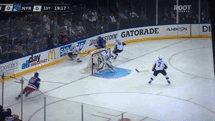
They weren’t holding onto the puck, a glaring problem in Game 2 and the support between D-men was much improved and a big reason for the Penguins success in being to allude the Rangers forecheck.
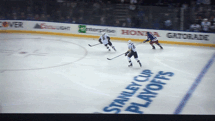
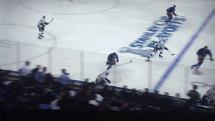
Neutral Zone Stretch
When the Penguins are playing stifling defense like they did tonight in allowing just 2 high danger scoring chances 5 v 5, it starts with the forwards play through the middle of the ice.
They were excellent with pressure in slowing the Rangers attack.
When it came to attacking offensively through the neutral zone, the adjustments from the coaching staff were clear in this one.
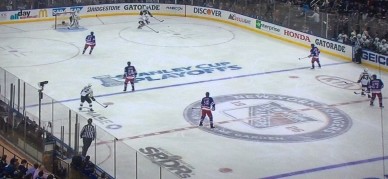
The Penguins went more away from their cross-ice long pass to get the opposition swinging side to side and create an odd-man rush, and in turn by stretching two forwards wide. The Penguins getting pucks deep early and often saw the Rangers giving the blueline much more as the game progressed. There wasn’t a wall of three players like Game 2.
Two areas the Penguins seemed to attack the Rangers’ with success.
1. A hard stretch pass to chip the puck in deep and turn puck battles into foot races (or get lucky with a Rangers turnover like the Cullen goal) something the Penguins did very well. Individually Conor Sheary was among those who excelled in this area.
2. On their controlled breakouts, the Penguins were significantly improved in getting past the Rangers F2 in their neutral zone setup that caused them fits in Game 2.
Few reasons for that.
The forward at the blueline on the strong side has two primary roles, chip the puck in with the weak side winger chasing on the forecheck or if the Rangers are playing back (like they were often in periods 2 & 3), gain the offensive zone. The Penguins were beating the Rangers through the neutral zone both ways.
Here’s Malkin leading a zone entry, beats the F1, F2, dishes over to Kunitz on the wall who hits Lovejoy for a shot on goal.
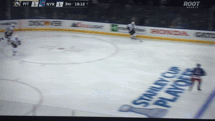
Here’s Crosby with a near identical zone entry. [hide] Beats F1, F2 in similar fashion, moves the puck over to Sheary along the wall and Pittsburgh easily gains the zone as the Rangers are playing off the blueline.
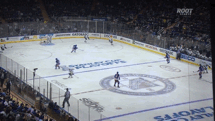
If you’re wondering why the Rangers were creating so little odd-man rushes compared to the first couple games, the Penguins were beating New York’s F1, F2 regularly and the Penguins’ speed game was back through the middle of the ice.
Pittsburgh hasn’t lost back-to-back games in regulation since December and good coaching is one reason why. It was on display in Game 3. [/hide]
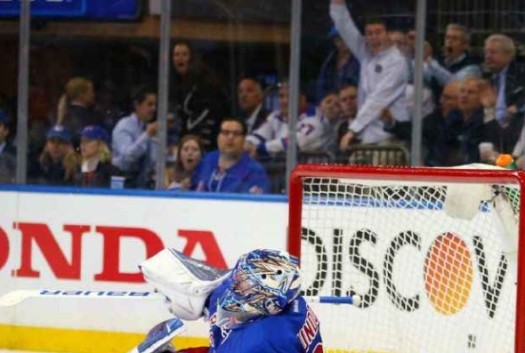

new article
You’re such a drama queen. A) There wasn’t much of a threat of a “Hearing” given that Bellemare nearly killed a man and got one game. B) It’d be a maximum of one game. C) Hard for them to encounter the “end of their season” in one game, when they have to lose three more. D) They’d be fine in one game sans Letang.
murray is a good goaltender. that kid is always square to the shooter and is in really good position. the kid can play. the pens will be fine with him in the net. who else noticed that zatkoff is very slow while moving laterally across his crease? that’s why he is a boaderline NHLer. it’s good to see murray back.
And your basing that off of the 2 big saves he made in the game?
Depaoli is right. you have to give lots of credit to sullivan here. in years past, coach dicksco or johnston wouldn’t have been able to adjust and the pens would have been out in 5. the pens looked really good last night. i was expecting the worst since we’ve had nothing but meltdowns since 09. it’s looking like the pens finally have a really good coach who can figure $hit out.
credit to sully to make malkin sit out last 6,7 mins of the game so pens can get a win
if he kept him all game who knows pens would let a bad goal or a bad penalty by malkin to put pens in a tough situation
maybe sully realized they were 15-1 without him and 0-1 with him in the line up
Credit to “Chubby” and his coming up big again. He traded yet?
hope he is
9th or 10th in the conference. Time to blow it up. That’s what i remember reading.
1. the pens have a new coach, everything has changed. 2. st.blurry is no longer in the net. do you really think the pens would have made the playoffs if MJ was still the coach?
When they had a new coach, you still said they’d finish 9th or 10th. Regardless, if all it took was a “new coach,” the whole team necessitating a rebuild couldn’t have been further off. Period. And, “St. blurry” will be back it the net as soon as he’s healthy. As well he should be.
Great game from the pens, getting back to their hockey, hope letang escape suspension because that could be the only thing that gets the rangers back in it
Hey stan why Malkin wasnt on the ice for pens last 6,7 mins of the game and sid and others were playing his shifts ?
is it because he was in the back taking a shitt or he is just shitt and coach sat him out
So malkin wasnt bench he was just in the locker room taking a grumper?
Maybe he’s hurt. Maybe he’s not up to full game shape yet. Or maybe they don’t trust him to win a big draw with a wonky wrist. I have no idea. The big question is – why should I care?
or maybe they didnt want to lose by him taking a dumb penalty in the 3rd
I think that’s the least likely scenario. Better chance he was in the back while you were blowing him.
Typical Frenchie
how is Drouin doing ? once again another canadian carrying your tampax team
Kucherov is carrying “tampax,” moron.
(shhhh, he’s not canadian)
Will Nash also be suspended for his WWE move against Daley?
That was a clean hit.
I bet Letang gets suspended for that. Looks worse in slow mo, but we’ll see what they say…..it is the playoffs.